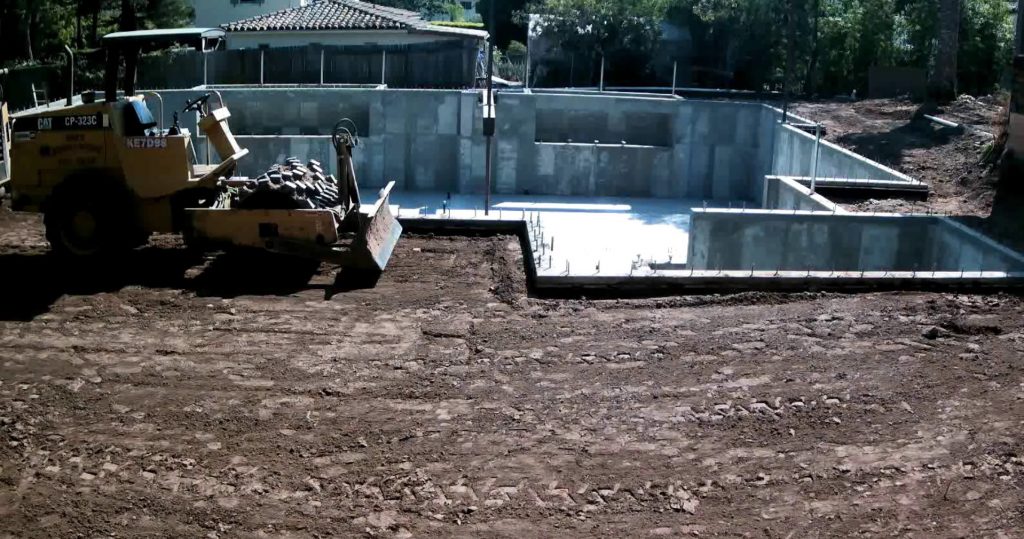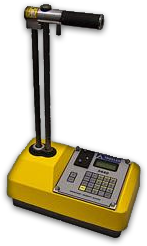The excavators did a bunch of over-excavation of the area that will be the garage and driveway.

The idea is that to insure proper equal settling under the entire span of a structure, you remove a bunch of soil, and then put it back all at equal soil compaction. To do this, they remove soil about three feet down, sift it thoroughly for rocks and organic matter, wet it down uniformly, and then lay it back down while periodically running over it with a compacting machine (shown above).
The interesting part of this was the soil compaction testing. Soil testing is being done with a device called a nuclear densometer. It uses two different nuclear decay sources, caesium and americium, to determine both the density and moisture content of the soil. Here is what the device looks like:

The caesium atoms release gamma radiation when they decay. The machine measures the amount of gamma radiation that is received through the soil over a fixed time period. The amount of radiation received is in direct proportion to the density of the soil. (As a side note, I seem to recall that caesium is also used in smoke detectors.)
The density meter also contains a neutron moisture gauge, which is where the americium atoms figure in. Americium atoms release neutrons as they decay, and neutrons directly interact with hydrogen atoms (you know, as in H2O aka water). The hydrogen molecules will slow down the neutrons, and the neutron moisture gauge measures the number of slowed neutrons, which is in proportion to the moisture content. Moisture content is important because overly dry soil won’t compact properly.
I’m curious about one claim that the soils engineer made about the device. He said that if you grabbed the rod at the end, where the caesium and americium sources are, you would get radiation burns, and that if device was damaged and the materials were exposed, it would be a considerable hazardous materials situation that would require a large area to be quarantined and cleaned up.
As it turns out, caesium (caesium-137 to be precise) in even small amounts can be quite dangerous.
The Kramatorsk radiological accident happened in 1989 when a small capsule containing highly radioactive caesium-137 was found inside the concrete wall of an apartment building in Kramatorsk, Ukrainian SSR. It is believed that the capsule, originally a part of a measurement device, was lost in the late 1970s and ended up mixed with gravel used to construct the building in 1980. Over 9 years, two families lived in the apartment. By the time the capsule was discovered, 6 residents of the building had died from leukemia and 17 more had received varying doses of radiation.
Well I’m convinced.